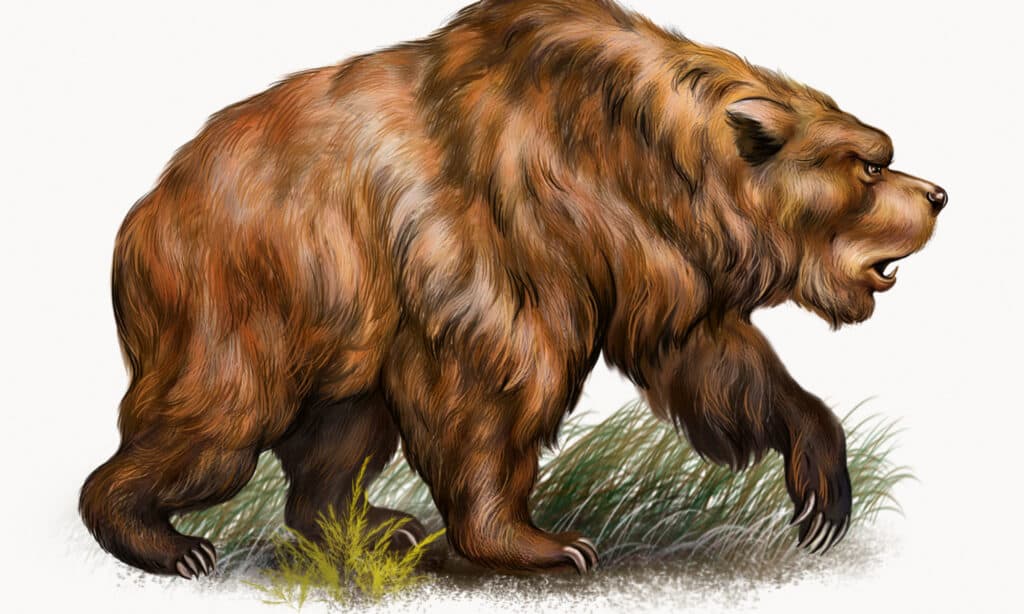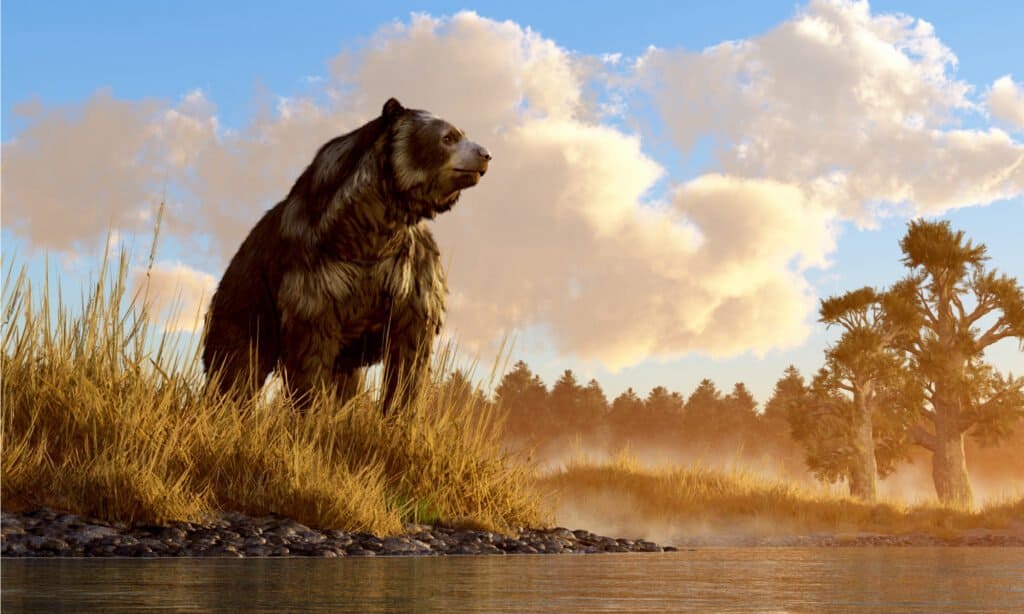Scientists have collected the bones of over 100,000 cave bears. Modern polar and grizzly bears are their distant cousins. Once upon a time, people thought the massive bones they so often found in caves belonged to dragons or unicorns. But, the bones littering European and Asian caves aren’t the bones of any mythical creature; they belong to the one and only cave bear. But, just why did cave bears go extinct?
Cave bears, well known because of their habit of hibernating (and dying) in caves, are some of the largest bears that ever lived. For a time, they even lived concurrently with modern humans. Their disappearance has long been a mystery to scientists. Today, researchers still debate the finer points of what exactly killed the cave bears.
Here, we’ll learn a little more about these fascinating ancient bears, and explore the question: why did cave bears go extinct?
Cave Bear Species Profile

There were two species of cave bear, both of which were the size of modern Kodiak and polar bears.
©Liliya Butenko/Shutterstock.com
Cave bears, unsurprisingly, are members of the bear family. Their closest living relatives are the grizzly bear and polar bear, though they were very similar in size and appearance to the Kodiak bear. Famously vegetarian despite their huge size and fearsome appearance, these bears vanished from the world thousands of years ago.
Let’s get to know the cave bear a little better before diving into the factors that led to its extinction.
Where and When did Cave Bears Live?
Cave bears, like mammoths, cave lions, and giant ground sloths, are extinct. They lived only in Europe and western Asia and nowhere else on Earth. But, cave bears were widespread, and occupied most of modern-day Europe and western Asia. They may have even lived as far south as North Africa.
If you’re wondering “why did cave bears go extinct?” then you probably want to know when they lived, and when they died out. Cave bears lived during the Pleistocene epoch; they were present in Europe up until around 24,000 years ago. Like wooly mammoths, cave bears were specially adapted to survive the harsh, glacial world of the late Pleistocene. Unfortunately, they weren’t adept enough to survive extinction.
How Big was the Extinct Cave Bear?

Male cave bears had a standing height of over 10 feet.
©Daniel Eskridge/Shutterstock.com
Cave bears were very stocky bears, with large heads and back legs that were shorter than their front legs. They had a distinct hump, like a grizzly bear, though their heads were even heavier than those of grizzlies. They likely had brown to black fur, in addition to their enormous claws and canine teeth.
Further, cave bears were large. Male cave bears grew up to five feet tall at the shoulder, with a standing height of over 10 feet. Females were significantly smaller, generally weighing less than 1,000 pounds. Males, however, could weigh over 2,000 pounds.
Were Cave Bears the Biggest Bears that Ever Lived?
Adult cave bears likely had no natural predators, though carnivores like cave lions and cave hyenas almost certainly preyed on the weak, young, and old. But, cave bears weren’t the biggest bear that ever lived. That title belongs to the South American short-faced bear, which weighed in at a whopping 3,500 pounds and stood over 11 feet tall on its hind legs.
What Did Cave Bears Eat?
Cave bears might have been big and scary, but their diet was surprisingly peaceful. These intimidating bears stuck almost entirely to fruits and vegetables. Scientists believe that cave bears ate meat only on very rare occasions. Cave bears actually had fewer premolars than other types of bears; they didn’t chew meat, so they didn’t need them. When considering the question “why did cave bears go extinct”, it’s important to remember this specialized diet—it may have led to the cave bear’s demise.
What Caused the Extinction of Cave Bears?
Scientists have long debated the factors behind the cave bears’ extinction and believe that cave bears went extent due to climate change and human habitation.
Let’s take a closer look at each of the most likely factors behind the extinction of the cave bear.
1. Climate Change
Cave bears survived, and thrived, throughout much of the Pleistocene epoch, along with many other species of megafauna. But, beginning about 30,000 years ago, the planet underwent what is known as a glacial maximum. During the glacial maximum, glaciers covered more of the globe than they ever have since. This meant that summers, and growing seasons for the cave bear’s food, became shorter. Winters got longer and harsher too. It’s very likely that cave bears, which were specially adapted to eat fruits and vegetables, just couldn’t get enough food to survive, so their population decreased as the eons passed.
2. Humans
For decades, scientists have gone back and forth as to whether or not humans had a role in the extinction of cave bears. Humans wouldn’t have hunted cave bears for food (they would have been far too dangerous), but, they may have kicked them out of their caves. Studies have shown that cave bear populations began to decrease about 50,000 years ago; almost the exact same time that modern human are believed to have entered their territory.
Some scientists have hypothesized that, while humans didn’t actively hunt these giant bears, they may have contributed to their extinction in another way. Increasing human populations may have displaced cave bears from the caves they needed to survive the long winters. This would only have added to the pressures that led to cave bears going extinct.
When Did the Cave Bear Become Extinct?
Cave bears went extinct about 24,000 years ago, after around 25,000 years of population decline. Today, scientists still can’t be sure what exactly caused cave bears to go extinct, but they can be certain of when the last bears died.
Up Next
When Did Grizzly Bears Go Extinct in Oregon?
The photo featured at the top of this post is © Daniel Eskridge/Shutterstock.com
Sources
- , Available here: https://www.britannica.com/animal/cave-bear
- , Available here: https://www.smithsonianmag.com/history/fate-of-the-cave-bear-69538895/
- , Available here: https://www.newscientist.com/article/2239316-europes-cave-bears-may-have-died-out-because-of-their-large-sinuses/#:~:text=Cave%20bears%20(Ursus%20spelaeus)%2C,during%20the%20last%20glacial%20maximum
- , Available here: https://onlinelibrary.wiley.com/doi/abs/10.1111/bor.12380
Thank you for reading! Have some feedback for us? Contact the AZ Animals editorial team.






